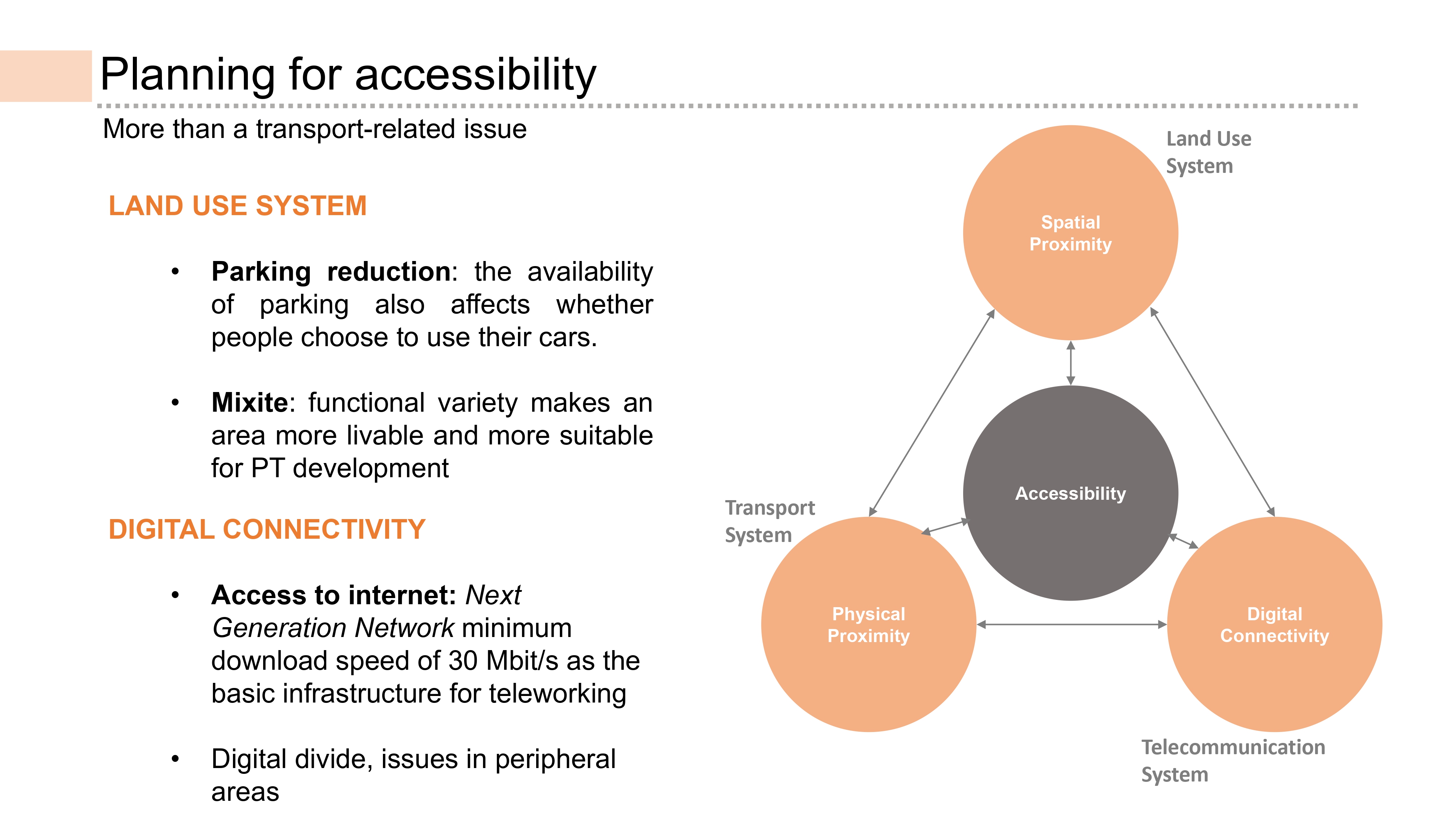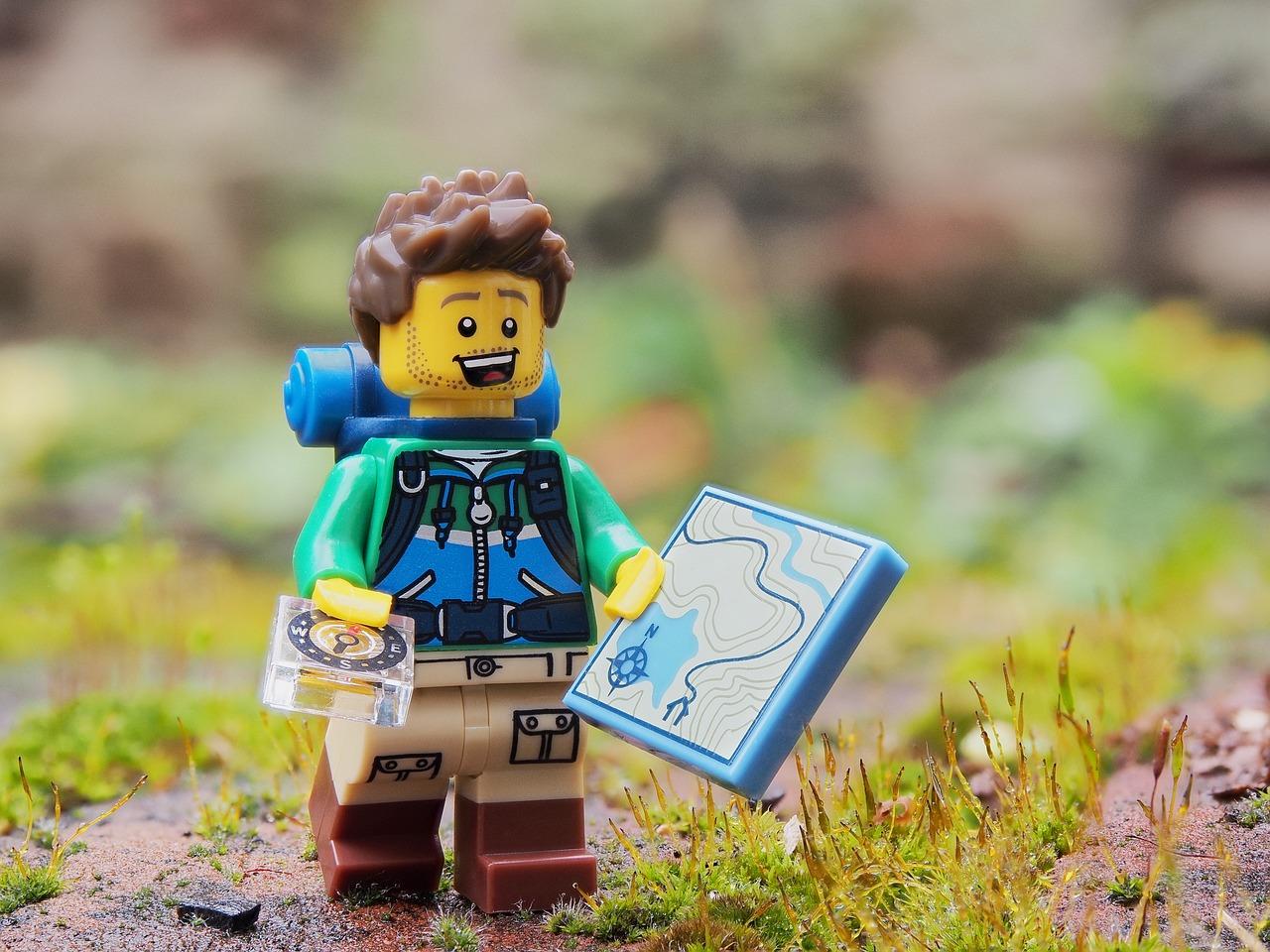One noteworthy aspect of this partnership is its geographical balance and urbanistic diversity, encompassing small, medium-sized, and metropolitan cities. This diversity enables the analysis and planning of Sustainable Urban Mobility at various urban scales, particularly significant for the European polycentric context. The S.M.ALL network is beginning to build around this uniqueness, using it as a key to understanding the ambitions, aspirations, and challenges emerging in the first six months of work across partner cities.
The initial challenge was understanding how to interpret two significant but often desensitized adjectives: inclusive and sustainable. In the first collective partnership meeting held during the URBACT University in Malmö it became evident, irrespective of the territorial action scale, that these adjectives led to defining a superior realm of action summarized by the word "accessibility." This new term allowed the spatialization of the network's action terms within the domain of urban design, specifically focusing on the
role and use of public space. The focus on accessibility found fertile ground in an approach shared by cities to address the theme of sustainable mobility. This approach is based on specific action categories fully adopted by S.M.ALL partners, which are:
- DESIGN: Emphasize urban planning and design for cohesive cities by prioritizing accessibility over mere expansion of transport infrastructure or movement of people and goods.
- TECHNOLOGY: Leverage electronics, information processing, and communication technologies to enhance transportation efficiency, accentuating advancements over expanding physical infrastructure.
- BEHAVIOUR: Influence behavior by designing effective transport solutions centered around people's experience of moving within the city, rather than prioritizing cars.
All cities recognized these three elements as conceptual frameworks to build their storytelling, ultimately through the Integrated Action Plan (IAP).

Accessibility, closely tied to the use and design of public spaces, has proven to be the ideal context for creating and generating stories linked to the S.M.ALL project. In the first thematic exploration during this initial transnational meeting, the notion of accessibility was thoroughly studied, keeping in mind an interpretation easily applicable in an operational context. Accessibility will consider aspects related to transport systems (physical proximity), the potential linked to the advancement of technology in urban contexts (digital connectivity), and, finally, in the context of land use management (spatial proximity). The potential of this theme will be contextualized and developed case by case, depending on the target groups identified by cities in the next months, in the different local planning paths based on work done with ULGs (Urbact Local Groups).
The identification of target groups for integrated plans led to defining another key concept: the relationship between inclusion, sustainability, and vulnerability. In various cities, the immediate equation of inclusion with disabilities was reconsidered, recognizing that everyone is vulnerable at certain times in life for various reasons. Cities have reflected on target users (e.g., disabled individuals, the elderly, children…) for inclusive planning actions. The decision was made to leave the variables of inclusivity open, defining the targets of vulnerability at the end of the process. However, all cities agreed on a planning principle: a design solution that works for disabled individuals inevitably improves the quality of movement for all other target groups, including so-called "normal" individuals. Cities are orienting themselves differently regarding target choices. This choice, along with the creation of the local action group, will significantly influence the set of initial problems, urban areas of operation, and the challenges at both local and transnational levels. These considerations are reflected in the definition of the S.M.ALL roadmap.Before delving into the network's future movements, emphasis is placed on how cities in this network are orienting themselves. Strasbourg, Ferrara, and the urbanized territory of the Quadrilatero (Braga, Famalicão, Guimarães, and Barcelos) have a specific target: planning for and with children, especially in areas where school services are provided. Skofja Loka and Komotini have a precise target: planning for disabled individuals. Larissa and Druskininkai cater to both children and disabled individuals. Finally, Sofia and Bucharest are exploring multiple vulnerabilities and, at this moment, are keeping all options open. This information emerged from on-site visits and responses to questionnaires prepared by the lead expert. It should be noted that, in this recent meeting, Druskininkai and Bucharest hinted at reconsideration and a reduction in targets.
Speaking of reconsiderations, in conclusion, a mention is made of the S.M.ALL roadmap, detailed in the Baseline Study. The challenges of this network are built within problems identified from the bottom up in collaboration with key stakeholders. The roadmap is structured around two main lines:
- local action, from initial challenges to the delivery of the final integrated plan, and
- the transnational path, which relies on three moments:
- thematic deepening (Learning Orientation),
- peer-to-peer exchange among involved cities (Learning to Cooperate), and
- collective work through working groups (getting more through co-creation/co-design experiments).
The methodology followed by S.M.ALL is based on adaptive management, deemed suitable for handling the complexity of these bottom-up planning paths, where moments of convergence and divergence alternate until the implementation phase. The methodology prioritizes flexibility, collaboration, and stakeholder feedback. It not only organizes elements along a linear path but introduces circular elements operating across different cities. Essentially, it is a methodology based on adaptive management and planning principles, integrating elements of a non-deterministic approach.
This allows for a hybrid path that harmonizes linearity and circularity through self-assessment moments of ongoing paths at the local level. In other words, the methodology shifts from interdisciplinarity to trans-disciplinarity, from interaction-oriented to co-design, and elevates stakeholder participation to the highest levels of cooperation, involving responsibility in both design and self-monitoring and management. The methodology is founded on the principles of adaptive management, including flexibility, learning orientation, an iterative process, collaboration, feedback loops, resilience, monitoring and evaluation, inclusivity, and transparency.
The S.M.ALL city network, after this activation phase, has internalized the key messages of the URBACT method and the profound sense and experimentation it suggests. Partners, despite their different capacities, structures, and urban-territorial scales, are perfectly aligned on the starting line leading towards planning actions.


